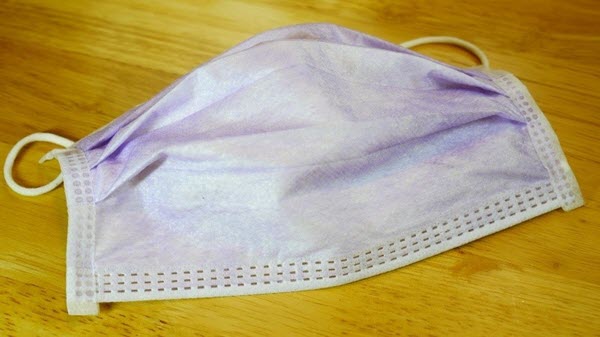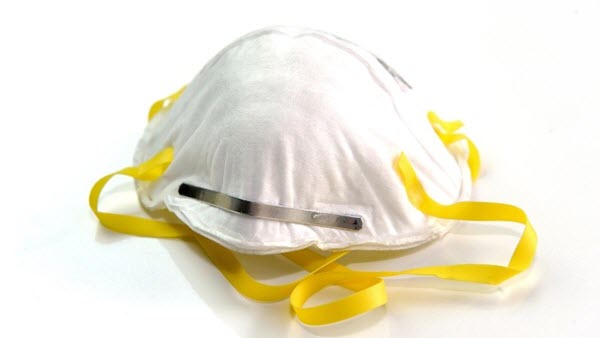N95 respirators and surgical masks are examples of personal protective equipment that are used to protect the wearer from airborne particles and from liquid contaminating the face. The Centers for Disease Control and Prevention (CDC) National Institute for Occupational Safety and Health (NIOSH) and the Occupational Safety and Health Administration (OSHA) also regulate N95 respirators.
It is important to recognize that the optimal way to prevent airborne transmission is to use a combination of interventions from across the hierarchy of controls, not just PPE alone.
COVID-19 Resources on Face Masks and Surgical Masks
- Face Masks and Surgical Masks for COVID-19: Includes FAQs on manufacturing, purchasing, importing, and donating masks
- FAQs on Shortages of Surgical Masks and Gowns During the COVID-19 Pandemic
- Surgical Mask and Gown Conservation Strategies – Letter to Health Care Providers Includes conventional capacity strategies, contingency capacity strategies, and crisis or alternate strategies (if masks are running low and if no masks are available)
On this page:
- N95 Respirators Not for Use by the General Public
- CDC Recommends Cloth Face Coverings for Use by the General Public
- Surgical Masks
- N95 Respirators
- Comparing Surgical Masks and Surgical N95 Respirators
- General N95 Respirator Precautions
- Decontaminating Respirators
- N95 Respirators in Industrial and Health Care Settings
N95 Respirators Not for Use by the General Public
The Centers for Disease Control and Prevention (CDC) does not recommend that the general public wear N95 respirators to protect themselves from respiratory diseases, including coronavirus (COVID-19). Those are critical supplies that must continue to be reserved for health care workers and other medical first responders, as recommended by current CDC guidance.
CDC Recommends Cloth Face Coverings for Use by the General Public
The CDC recommends that members of the public use simple cloth face coverings when in a public setting to slow the spread of the virus since this will help people who may have the virus and do not know it from transmitting it to others. For more information, see the CDC’s Recommendation Regarding the Use of Cloth Face Coverings, Especially in Areas of Significant Community-Based Transmission.
The best way to prevent illness is to avoid being exposed to this virus. However, as a reminder, the CDC always recommends everyday preventive actions, such as hand washing and maintaining at least 6 feet of social distancing, to help prevent the spread of respiratory diseases.
Surgical Masks
A surgical mask is a loose-fitting, disposable device that creates a physical barrier between the mouth and nose of the wearer and potential contaminants in the immediate environment. Surgical masks are regulated under 21 CFR 878.4040. Surgical masks are not to be shared and may be labeled as surgical, isolation, dental, or medical procedure masks. They may come with or without a face shield. These are often referred to as face masks, although not all face masks are regulated as surgical masks.
Surgical masks are made in different thicknesses and with different ability to protect you from contact with liquids. These properties may also affect how easily you can breathe through the face mask and how well the surgical mask protects you.
If worn properly, a surgical mask is meant to help block large-particle droplets, splashes, sprays, or splatter that may contain germs (viruses and bacteria), keeping it from reaching your mouth and nose. Surgical masks may also help reduce exposure of your saliva and respiratory secretions to others.
While a surgical mask may be effective in blocking splashes and large-particle droplets, a face mask, by design, does not filter or block very small particles in the air that may be transmitted by coughs, sneezes, or certain medical procedures. Surgical masks also do not provide complete protection from germs and other contaminants because of the loose fit between the surface of the mask and your face.
Surgical masks are not intended to be used more than once. If your mask is damaged or soiled, or if breathing through the mask becomes difficult, you should remove the face mask, discard it safely, and replace it with a new one. To safely discard your mask, place it in a plastic bag, and put it in the trash. Wash your hands after handling the used mask.
N95 Respirators
An N95 respirator is a respiratory protective device designed to achieve a very close facial fit and very efficient filtration of airborne particles. Note that the edges of the respirator are designed to form a seal around the nose and mouth. Surgical N95 Respirators are commonly used in healthcare settings and are a subset of N95 Filtering Facepiece Respirators (FFRs), often referred to as N95s.
The similarities among surgical masks and surgical N95s are:
- They are tested for fluid resistance, filtration efficiency (particulate filtration efficiency and bacterial filtration efficiency), flammability, and biocompatibility.
- They should not be shared or reused.
Comparing Surgical Masks and Surgical N95 Respirators
The FDA regulates surgical masks and surgical N95 respirators differently based on their intended use.
A surgical mask is a loose-fitting, disposable device that creates a physical barrier between the mouth and nose of the wearer and potential contaminants in the immediate environment. These are often referred to as face masks, although not all face masks are regulated as surgical masks. Note that the edges of the mask are not designed to form a seal around the nose and mouth.
An N95 respirator is a respiratory protective device designed to achieve a very close facial fit and very efficient filtration of airborne particles. Note that the edges of the respirator are designed to form a seal around the nose and mouth. Surgical N95 Respirators are commonly used in healthcare settings and are a subset of N95 Filtering Facepiece Respirators (FFRs), often referred to as N95s.
The similarities among surgical masks and surgical N95s are:
- They are tested for fluid resistance, filtration efficiency (particulate filtration efficiency and bacterial filtration efficiency), flammability, and biocompatibility.
- They should not be shared or reused.
General N95 Respirator Precautions
- People with chronic respiratory, cardiac, or other medical conditions that make breathing difficult should check with their health care provider before using an N95 respirator because the N95 respirator can make it more difficult for the wearer to breathe.
- Some models have exhalation valves that can make breathing out easier and help reduce heat build-up. Note that N95 respirators with exhalation valves should not be used when sterile conditions are needed.
- All FDA-cleared N95 respirators are labeled as “single-use,” disposable devices. If your respirator is damaged or soiled, or if breathing becomes difficult, you should remove the respirator, discard it properly, and replace it with a new one. To safely discard your N95 respirator, place it in a plastic bag, and put it in the trash. Wash your hands after handling the used respirator.
- N95 respirators are not designed for children or people with facial hair. Because a proper fit cannot be achieved on children and people with facial hair, the N95 respirator may not provide full protection.
Decontaminating Respirators
The FDA has issued Emergency Use Authorizations (EUAs) for the emergency use of decontamination systems for use in decontaminating certain respirators used by health care personnel when there are insufficient supplies of new respirators resulting from the COVID-19 pandemic. New FDA-cleared N95 respirators or NIOSH-approved N95 respirators or other FDA authorized respirators are always the first choice before a decontaminated respirator.
- If a used respirator that is FDA-cleared or NIOSH-approved is available and a new respirator covered under one of the FDA Emergency Use Authorizations for respirators is not available, you may consider decontaminating and reusing the used respirator with a decontamination system that has an FDA Emergency Use Authorization, if the used respirator is compatible with the decontamination system.
- If your facility is using respirators that have been subsequently removed from Appendix A, these respirators are no longer authorized by FDA for single use or for reuse by an FDA authorized decontamination system.
- Additionally, as of June 6, 2020, any respirator authorized by the Non-NIOSH-Approved Disposable Filtering Facepiece Respirators Manufactured in China, or any respirators with exhalation valves are not authorized to be decontaminated by any of the authorized decontamination systems.
- If you have concerns about respirators or questions about the packaging, labeling, or quality of the respirators, consider replacing, discarding, or returning the respirators to the distributor.
Respirators that are NIOSH-approved before decontamination only retain their NIOSH approval status post-decontamination if the respirator manufacturer permits the use of the decontamination method with the specific system and cycle parameters. To determine the NIOSH approval status of a specific decontaminated NIOSH-approved respirator, please check with the respirator manufacturer.
N95 Respirators in Industrial and Health Care Settings
Most N95 respirators are manufactured for use in construction and other industrial-type jobs that expose workers to dust and small particles. They are regulated by the National Personal Protective Technology Laboratory (NPPTL) in the National Institute for Occupational Safety and Health (NIOSH), which is part of the Centers for Disease Control and Prevention (CDC).
However, some N95 respirators are intended for use in a health care setting. Specifically, single-use, disposable respiratory protective devices used and worn by health care personnel during procedures to protect both the patient and health care personnel from the transfer of microorganisms, body fluids, and particulate material. These surgical N95 respirators are class II devices regulated by the FDA, under 21 CFR 878.4040, and CDC NIOSH under 42 CFR Part 84.
N95s respirators regulated under product code MSH are class II medical devices exempt from 510(k) premarket notification, unless:
- The respirator is intended to prevent specific diseases or infections, or
- The respirator is labeled or otherwise represented as filtering surgical smoke or plumes, filtering specific amounts of viruses or bacteria, reducing the amount of and/or killing viruses, bacteria, or fungi, or affecting allergenicity, or
- The respirator contains coating technologies unrelated to filtration (e.g., to reduce and or kill microorganisms).
The FDA has a Memorandum of Understanding (MOU) with CDC NIOSH which outlines the framework for coordination and collaboration between the FDA and NIOSH for the regulation of this subset of N95 respirators.
For additional differences between surgical masks and N95 respirators, please see CDC’s infographic.
[Disclaimer]











